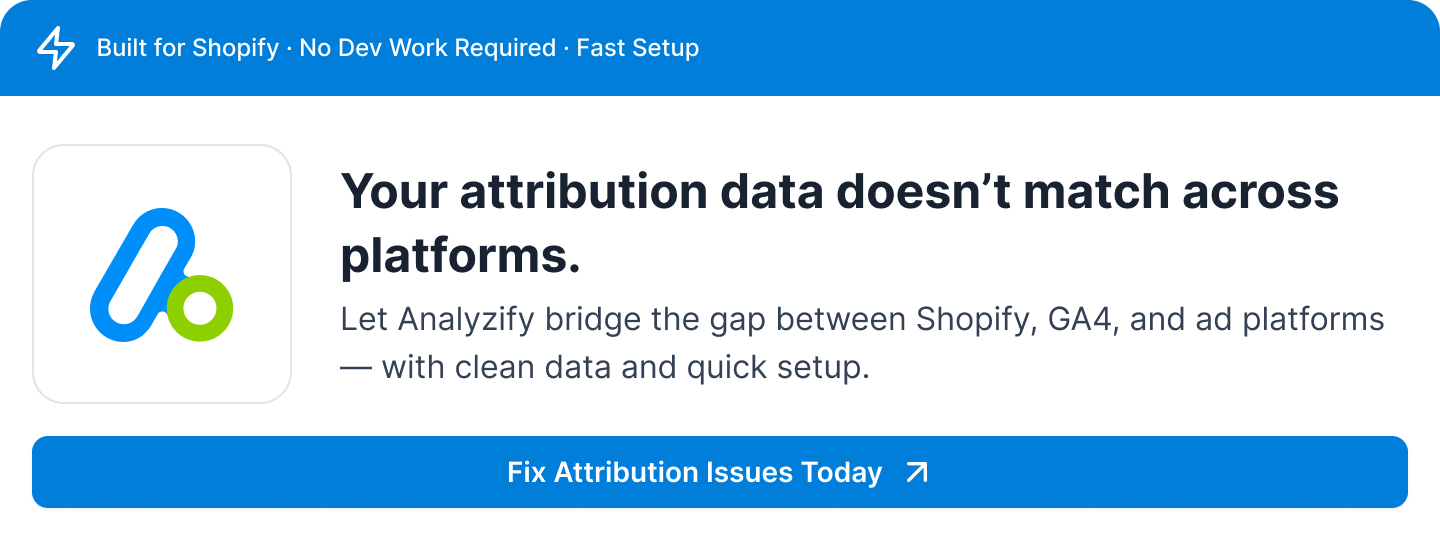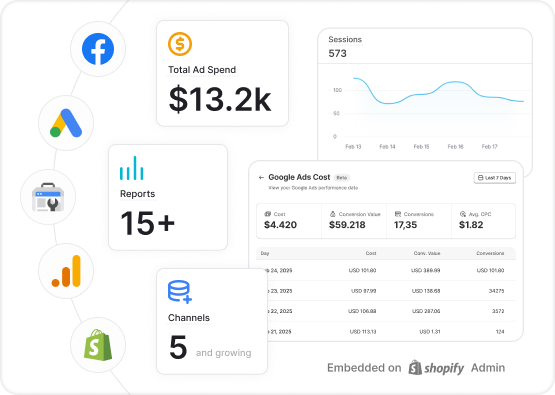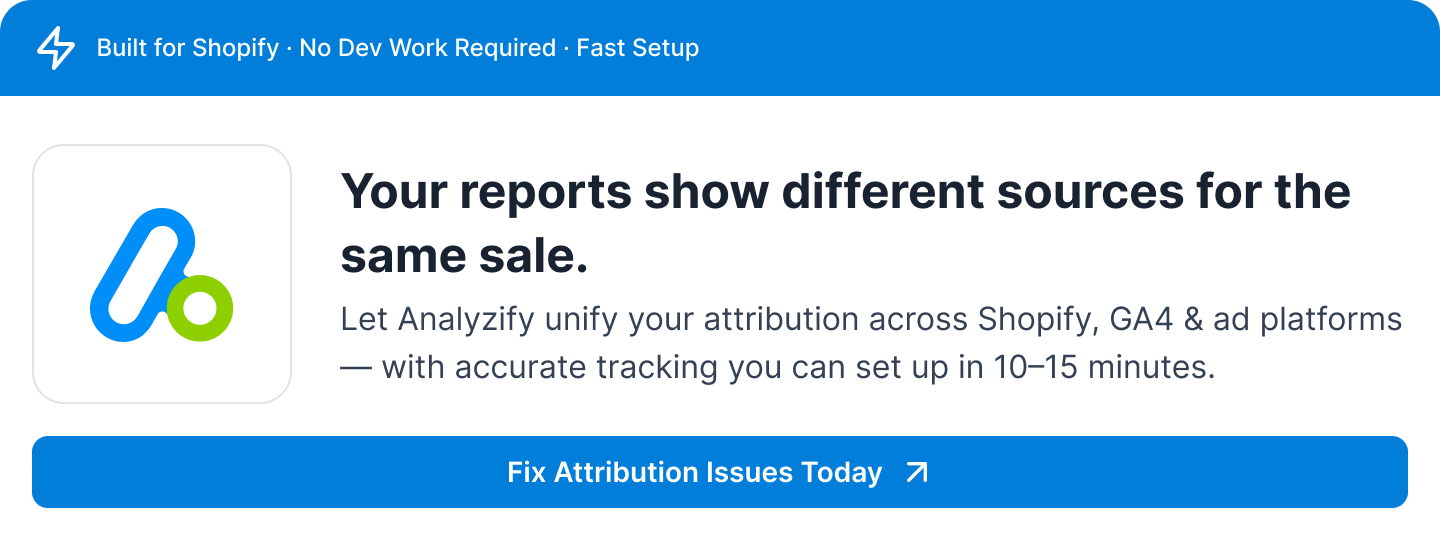Shopify says the conversion came from Facebook. GA4 says it was direct. Google Ads claims credit for the same sale.
Sound familiar? You’re not alone. Attribution data rarely lines up across platforms—and that creates real problems for ecommerce teams trying to optimize ad spend and understand what’s working.
The Problem: Conflicting Attribution Data Across Platforms
When your attribution data tells a different story depending on where you look, it doesn’t just create confusion—it impacts your budget, campaign strategy, and trust in your own numbers.
You might see:
- Higher conversions reported in Google Ads than in GA4
- Facebook taking credit for conversions already counted elsewhere
- A growing gap between what Shopify shows and what your ad platforms report
This isn’t a technical glitch—it’s the natural result of how each platform handles attribution.
Why Attribution Metrics Don’t Match Between Shopify, GA4, and Ad Platforms
Each platform has its own approach to tracking user behavior and assigning credit for conversions. Let’s break it down:
- Shopify tracks events directly on your storefront and uses a last-touch model. It ties orders to the last known source and stores attribution data in the order record itself.
- GA4 uses a data-driven attribution model, blending real and modeled data to estimate what drove the conversion. It’s session-based and heavily impacted by cookie availability.
- Google Ads & Meta Ads rely on Click IDs (like GCLID or FBCID) stored in browser cookies. They also use their own attribution windows, which may stretch well beyond what Shopify tracks.
Now layer on top of that:
- Cookie restrictions from Safari, Firefox, and iOS
- Users switching devices or clearing their history
- Ad blockers and tracking preferences
Suddenly, it’s no wonder one conversion appears under three different sources across your reports.
Want a closer look at how Shopify attribution actually works? Read this breakdown!
How Analyzify Helps You Align Attribution Across Platforms
Analyzify acts as your attribution backbone. Instead of relying on fragile cookies or modeled assumptions, we capture key attribution data at the cart level—when users add products to their cart.
This is a turning point in the user journey. By preserving UTM parameters, Google Click ID (GCLID), Facebook Click ID (FBCID), referrer, and other identifiers in Shopify at this exact moment, we lock in the real source of the visit—before cookie restrictions or device changes can erase it.
![]()
That data is:
- Stored securely in Shopify, not in browser cookies
- Tied to the order, even if the user returns later or switches devices
- Transmitted to platforms like Google Ads, Meta, and GA4 through our server-side infrastructure
By giving each platform the cleanest and most complete version of the user journey, you reduce attribution gaps—and regain control over how conversions are credited.
Interested in improving GA4 accuracy with server-side tracking? Here’s how to set it up on Shopify!

What You Can Do With Consistent Attribution Data
Once your attribution signals are aligned across platforms, you unlock real business benefits:
- Trust your reports again — no more puzzling over conflicting conversion sources
- Optimize ad spend more confidently — know exactly which channels deliver returns
- Evaluate channels fairly — stop penalizing platforms for data loss
- Strengthen your tracking long-term — cart-level attribution is resilient to browser restrictions, ad blockers, and cross-device behavior
![]()
Analyzify doesn’t just show you more data—it helps each platform work better with what it receives.
Struggling with inflated “direct” traffic in GA4? Here’s how to fix that!
Where to Access This Data Inside Shopify and Analyzify
We make it easy to find and act on your attribution insights:
- Shopify Order Details — view attribution source directly within each order
- Analyzify Attribution Reports — explore multi-source patterns, top-performing campaigns, and more

These reports help you go beyond platform-specific dashboards and get a unified view of what’s really working.
Solve the Attribution Discrepancy Problem for Good
Attribution mismatches aren’t going away on their own. Platform rules, privacy updates, and tracking gaps will only get more complex.
Analyzify gives you a consistent, factual layer of attribution data that strengthens every platform you use—and brings clarity to your marketing strategy.
👉 Book a free demo to see it in action and talk through your store’s setup.


































